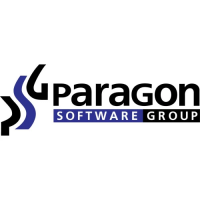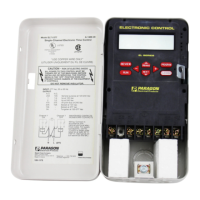Safety Rules
The warrantyon yourDTC 1000controller doesnot cover
damagefromoverfiring, regardlessof thecircumstances.Itis
the operator’s responsibilityto make sure thekiln turnsoff at
theendofthefiring.Followthesesafetyrulesinadditiontothe
ones in your kiln or furnace manual.
When not in use, unplug kiln or furnace or turn off
breaker.
Donotleavethekilnunattended,especiallynearthe
expected shut-off time.
Wear firing safety glasses (available from Paragon)
when looking into peephole of a hot kiln.
Do not touch hot sides of kiln or furnace. Keep un
-
supervised children away.
Install your kiln or furnace at least 12 inches from
any wall or combustible surface. (See manufac
-
turer’s recommendation for your model.)
Do not open lid or door until kiln or furnace has
cooled and all switches are off.
Fireonly ina well-ventilated,covered andprotected
area away from flammable materials. Keep cordset
away from hot sides of kiln or furnace.
DANGEROUS VOLTAGE! Do not touch heating
elements withanything. Disconnect kiln or furnace
before servicing.
Do not operate if the controller itself is hotter than
150°F/66°C.(Seeinstructionsonpage13 forcheck
-
ingboardtemperature.)Neverallowthefiringroom
temperature to exceed 110°F/43°C. (Measure room
temperature at least three feet away from the kiln.)
Getting Started
Do NOT fire your kiln or furnace until you have read this section and “Cone-Fire
Basics” or “Ramp-Hold Basics.” To use your controller to its fullest capacity, read the ad-
vanced sections and “Additional Features.”
Testing and Recording
You will learn much by testing. How slowly should clay be
heated through quartz inversion? How slowly must you cool
glass through the annealing range? Find out for yourself by
testing.TheDTC1000canpreciselycontroleverystageoffir
-
ing, so you can easily experiment and test.
Keep a notebook of firing records. When you fire similar
projectsweekslater,afteryouhaveforgottenthedetailsofyour
previous firing, you will be grateful for your records.
Room Temperature and Humidity
ItisokaytostoretheDTC1000atsub-zerotemperatures.
But before operating, raise the room temperature to at least
0°F/-18°C.
The circuit board is ratedfor 155°F/68°Cmaximum oper
-
atingtemperature.However,maximumtemperatureforrated
accuracyis125°F/52°C.Iftheboardgetshotter,openwindows
and exhaust hot air from the room. (See page 13 for instruc
-
tions on checking circuit board temperature.)
High humidity will not adversely affect the DTC 1000 un
-
less water condenseson the circuit board. If this happens, do
not fire the kiln until the moisture has evaporated from the
board.
IdLE and CPL Messages
The controller displays ErrP when you first apply power.
PressENTER. ErrP willchangeto IdLE andaflashing tem-
perature. Operations begin from IdLE .
If the display shows FAIL instead of IdLE , the thermo
-
couple is either disconnected or burned out. (See page 18.)
CPL means “completed.” The controller will display
CPL ,then IdLE , afteritperformsactions suchas changing
°Fto°Cdisplay. CPL mayremainforawhilebefore IdLE ap
-
pears. Please be patient—the controller is processing data.
Which Instructions to Use
The DTC 1000 fires in two modes:
1) Ceramic Cone-Fire, based on pyrometric cones.
2) Ramp-Hold, based on firing rates and target tempera
-
tures.
Ceramickilns,usuallytop-loading,usebothCone-Fireand
Ramp-Hold. Heat treating, glass fusing, and enameling fur
-
naces and kilns usually come with Ramp-Hold only.
FAST, MEDIUM, SLOW, CONE-FIRE, and Cone #s
printed on the controller faceplate apply only to
Cone-Fire mode.
4

